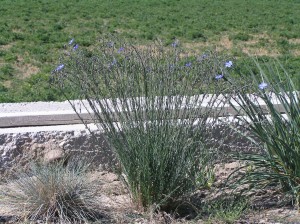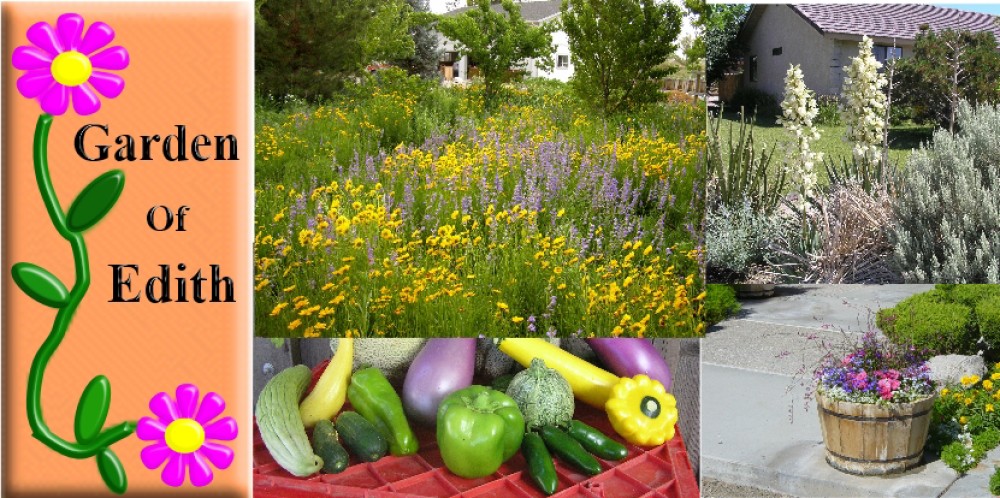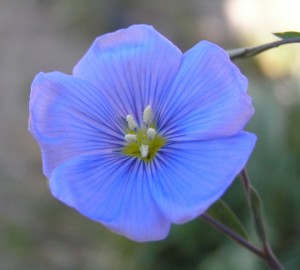I must have dumped some wildflower seed out because I didn’t remember
planting these beautiful blue flowers I saw in my backyard late one spring. They were blooming when I had just experienced a lot of frustration with bulbs I had planted the previous fall hoping for a mass display similar to the pictures in the catalogs. Instead, with our unpredictable spring I was only getting to enjoy a bloom for several days before a late frost would nip it. The mass display of bulbs blooming at the same time never happened that spring. So these beautiful blue flowers were a welcome surprise and I didn’t even remember dumping the seed in my backyard.
These blue flowers are either Linum lewisii or Linum perenne. The common name for both is blue flax and both are perennial. What distinguishes the two species are very fine differences in their floral anatomy that I won’t discuss here but both behave very similarly. Neither is invasive and only Linum lewisii is native to North America. Most likely, these are Linum perenne because at the time I likely dumped the wildflower seed, it was common to put the introduced species, Linum perenne, in wildflower seed mixes.
Linum lewisii is native to North America and a number of online native seed vendors sell seed for this species. The seeds of this short-lived perennial germinate readily without any special treatment. My experience is that you can directly plant the seed in the garden or you can plant them in trays in the greenhouse and transplant them in the young seedling stage to the garden in spring or early fall. Flowering will not occur until the next season.
In May and June of the second year after perennial blue flax seeds have

This blue flax plant has is several seasons old and has a vase shaped structure. It is about 12″ tall.
germinated is when the first blue flowers will appear and each plant will only have a few stems. When this plant is several years old, it will assume a vase like shape of many stems bearing short fine leave along its length. Each stem will terminate in a blue flower and when planted in mass, the effect is a patch of blue in late spring or early summer in your garden.
Blue flax is a low maintenance perennial that requires only a small amount of watering in a desert climate. It’s not picky about soil type but those planted in sandy beds will need more water.
Removing stems from the previous season is not necessary but removing old stems in late spring will make the plant look tidier.
Blue flax is hardy in USDA zones 3-8. The plants last a few years but if you let the stems stay on the plant over winter, allowing seeds to drop in the flowerbed, they will naturalize in that bed.

